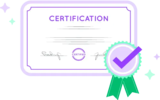Certified Scrum Master (CSM) Certification Training in Seattle




 Comprehensive 2-day CSM training in Seattle.
Comprehensive 2-day CSM training in Seattle.  Certified Scrum trainers with 15+ years of industry teaching experience.
Certified Scrum trainers with 15+ years of industry teaching experience.  100% money-back guarantee on CSM Course in Seattle.
100% money-back guarantee on CSM Course in Seattle.  Access to 20+ WhatsApp groups.
Access to 20+ WhatsApp groups.  Earn 16 SEU/PDU credits.
Earn 16 SEU/PDU credits.  Access to numerous benefits with a 2-year Scrum Alliance membership.
Access to numerous benefits with a 2-year Scrum Alliance membership.  Get a highly valued CSM certification in Seattle.
Get a highly valued CSM certification in Seattle.

CSM Certification in Seattle Key Features
 2 Days Online Training
2 Days Online Training  Delivered by CSTs
Delivered by CSTs  16 PDUs and SEUs
16 PDUs and SEUs  Get Certification on 2nd Day
Get Certification on 2nd Day  Role plays, Games, & Simulations
Role plays, Games, & Simulations
 Scrum Alliance Exam Fee Included
Scrum Alliance Exam Fee Included  Join 20+ Scrum WhatsApp Groups
Join 20+ Scrum WhatsApp Groups  2-year Membership with Scrum Alliance
2-year Membership with Scrum Alliance  100% Money Back Guarantee
100% Money Back Guarantee
The Proven Path to CSM Certification Success

CSM Training in Seattle Course Content
Every product backlog item gets declared as DONE it must be accepted by all team members and they must in advance know when it is called DONE. Here the team must be appraised of how a work is done, what are the standards required to be obeyed, and the different ways to verify whether it is done.
Each user story will have a specific criteria description called the acceptance criteria for that story.
These days working with people across the globe on projects cannot be avoided. It is not possible to meet all at one table to discuss. Therefore managing teams with documentation might be effective but time-consuming and hence organization must embrace an agile way to work with distributed teams.
Even though it has its own flip side, still it is the best way to work with distributed teams. Remember that people remain the same irrespective of the geography and hence getting work done by setting expectation is quick. Also, use technology to meet people for daily stand up and execute the project efficiently.
- Tuckman’s Group Development Tools and Technique – Forming, Storming, Norming, Performing, Adjourning.
- Scrum Master tools Cynefin Framework – Simple, Complicated, Complex, and Chaotic.
- The Japanese Shu Ha Ri – Shu – self-disciplining, Ha – Innovate things, Ri – Execution
- Root cause analysis
- Every team member is given stick-it notes and asked to write their views about the project, deadline, completion etc.
- A good 3 minutes is given to each person to fill the following blank we can complete the task when we ……………………. Let each write their want. They can write 3 to 5 ideas.
- Ask everyone to read one idea each and make sure that the other person does not repeat the same idea.
- Have one person to make a note of all the ideas on the board.
- Take voting from all to come to a common working agreement from the list mentioned in the board.
The objective of release planning is to plan and make the scope, budget, and date for the incremental delivery in an agile project. Planning to have multiple sprints until the final product is released is discussed in the release planning meeting.
Every member of the scrum team and the stakeholders are part of this release plan meeting and it happens during each sprint activity. The release planning is done with the help of the product planning output and the pace at which the team completes the product backlog item per each sprint. This pace is nothing but the speed of the team and termed as velocity in agile projects.
- Four or more week longer sprints
- Bigger team size
- Complex backlog items
- What it does – the functionality and the features
- How does it perform – Acceptance criteria
The course will educate all participants from the basics of agile software development. Hence it is important that one should understand agile as an empirical process against the waterfall approach which is a defined process.
You will be taught to Plan, Execute, Check and then Adapt. Yes, CSM course begins with the detailed introduction to the iterative four-step approach.
The three key stakeholders in the scrum team are the product owner, development team and the scrum master. These roles are looked upon based on their command and responsibility.
- Product Owner – The person who is responsible for prioritizing the work and one who owns the ROI of the project is called the product owner. This person understands the customer need and creates the product backlog.
- Development Team – The set of people who are involved in writing code and developing the project is called the development team. These people will be assigned product backlog and will focus on completing the same.
- ScrumMaster – The scrum process is implemented with the help of the scrum master. This individual bridges gap between the team and the product owner. He/she hears the team view to help them resolve issues to work towards the goal of the company.
The evidence of human action is called arti ‘fact. In the scrum, it is represented in the form of a list, graph, etc. Artifacts are called information radiators. With this radiators, it is possible to achieve transparency in scrum projects which is one of the pillars of the empirical scrum process. Among the many, the three main artifacts are product backlog, sprint backlog, and increments.
Product backlog – The list of deliverables required from each individual is called the product backlog. The product owner will list the work and creates a backlog in each person name. The items are prioritised and one on the top needs immediate action.
Sprint backlog – The list of work taken for completion during a sprint meeting is called sprint backlog. During daily scrum, the team updates the sprint backlog to know where the team is still the next sprint meeting.
Increment – The completion of each product backlog item at the end of the sprint is called a product increment.
The framework of Scrum is simple and it deals efficiently with the changing situations. The work gets split into iterations. It is because during the development process the priority changes due to the situation, user mindset, technology etc. Therefore, the framework focus on splitting the project into sequences of iterations called sprint. Every sprint will last for maximum 4 weeks. Therefore the complexity of the project is split and all changes are accommodated during the sprint meeting. There is not much of loss and also the user gets the output per the expectation.
The framework is simply understood as Planning – Executing – Learning – Taking Actions. This will continue until the end result is achieved. Every sprint meeting will be in length to plan from the education of the previous sprint.
The elevated view from above about scrum is called the aerial view of Scrum. It is a neatly-documented framework that will address the facilitating limitations we relate to the situation when there is any lack of details.
The project is split into sequences of iterations and completed phase by phase.
Yes, that’s how you can easily remember the five values of the scrum process. C FOR C means to Commit you to need Courage. To develop Courage you need to Focus With Open mind and Respect all in the team.
You got it right, it is Commitment – Focus – Openness – Respect – Courage
Develop these five values and every scrum team will see success. Commit to the Sprint Goal and focus to work towards the same. Share your views openly and respect others opinion as well. Have the courage to accept what went wrong in a retrospective meeting to complete backlogs in your next sprint.
Learn the need for being agile in your software development projects. Understand the key concepts of the development using the agile approach which is driven by value. It is a well-organized project management process. Also, know how to embrace flexible planning methods. Become collaborative with the team, scrum master, and product owner.
a) Trivia About Agile Methodology-
In order to correct issues cropping up due to the waterfall method, a new development practice was introduced in 2001 by a set of people called as Agile Methodology. The main concept adapted in Agile is the iterative way. Development and testing happen in parallel to fix bugs at every stage. Set of software industry giants met in Snowbird, UT in 2000 to discuss this method. Then they decided to differentiate agile from the traditional method with some values and called them Agile Manifesto.
b) Agile Framework – A Brief Overview
Agile the iterative software development method follows many frameworks including the Scrum, Lean, Kanban, Extreme Programming, Feature-driven development etc. It is a big list and Scrum is the most commonly used framework. Every framework aims at making it lightweight and framing of a set of minimal rules. The aim of every framework being reaching the goal in an agile way. Yes, the iterative and incremental method is embraced with its own set of practices.
For example, the scrum will focus on three roles to go through the development cycle. The scrum master who is the coach and the link who connects the team and the customer. The product owner is the SME who will know the customer need and will let the team know about the same. Finally, the team which includes developer and testers to work on the project. Scrum method follows daily meetings, sprints and sprint retrospective to check the status of the project regularly. Feedbacks are exchanged and modifications are done at every stage.
c) Agile Manifesto
The set of values defined for Agile methodology is called Agile Manifesto. It was written in Feb 2001 by 17 independent software techies. There were several written among which 4 values were accepted by all which is given below.
- The project can become successful when it depends on people than tools, and discussions must be encouraged than implementing hardcore
- Working on the product should be encouraged than focussing on documentation.
- Customer satisfaction is the key over negotiating the contract.
- Reacting to the changes and not strictly following a plan.
Every beginner must understand this basic underlying principle of Agile to kick start their career in agile. Defining and describing these values with examples will allow learners to embrace the concept easily.
d) Key Principles in Agile-
The four Agile Manifesto gave birth to 12 agile principles.
- Customer satisfaction is the prime objective and this can be achieved by delivering project on-time with the expected outcome.
- Accept changes at any stage of development and produce a competitive product to the customer
- . Continuously sharing working software with the client instead of sharing documentation about project status
- Business team and development team works collaboratively.
- Provide support to the team with a motivated working environment.
- Conducting daily stand up meeting to let team meet face to face.
- Measure work progress with the working software.
- Promote sustainable development.
- Good design will improve the agility.
- Keep the entire process simple and discuss solution more than worrying about the problem.
- Empower team to come up with ideas.
- Introduce games during meetings to ease team tension and increase productivity.
- How to get to these principles will be explained during the training.
Upcoming Batches for CSM Certification in Seattle
Covering basic requirements to crack certification.
 2 Mock Exam
2 Mock Exam  100% Money Back Guarantee
100% Money Back Guarantee  Join WhatsApp Group for Support
Join WhatsApp Group for Support  Delivered by CSTS
Delivered by CSTS  2 Years Membership with Scrum Alliance
2 Years Membership with Scrum Alliance  Get 16 PDUs and SEUS
Get 16 PDUs and SEUS  Interactive training with our experienced and skilled Scrum trainers.
Interactive training with our experienced and skilled Scrum trainers.  Unlimited Revision Sessions
Unlimited Revision Sessions  JIRA and ACP Training and Certification
JIRA and ACP Training and Certification  100 Frequently Asked Interview Questions
100 Frequently Asked Interview Questions  2 Years Membership with Scrum Alliance
2 Years Membership with Scrum Alliance  Delivered by CSTS
Delivered by CSTS  Join WhatsApp Group for Support
Join WhatsApp Group for Support  Get 16 PDUs and SEUS
Get 16 PDUs and SEUS  Get 10+ Sample Resumes
Get 10+ Sample Resumes  Interactive training with our experienced and skilled Scrum trainers.
Interactive training with our experienced and skilled Scrum trainers.  Get 20 SEUs to renew your certification
Get 20 SEUs to renew your certification
Get ready to crack certification with advanced preparation
 AI for Scrum Master Certification from Scrum Alliance E _ Learning
AI for Scrum Master Certification from Scrum Alliance E _ Learning  8-Hours Live Virtual Session on AI for Scrum Masters
8-Hours Live Virtual Session on AI for Scrum Masters  6 Hours Live Virtual Session for Jira Tool Training
6 Hours Live Virtual Session for Jira Tool Training  2 Hours Career Mentorship
2 Hours Career Mentorship  5 High Quality Mock Exams
5 High Quality Mock Exams  Transform business workflows with generative AI certification from StarAgile In Collaboration with Microsoft
Transform business workflows with generative AI certification from StarAgile In Collaboration with Microsoft  100% Money Back Guarantee
100% Money Back Guarantee  Unlimited Revision Sessions
Unlimited Revision Sessions  JIRA and ACP Training and Certification
JIRA and ACP Training and Certification  100 Frequently Asked Interview Questions
100 Frequently Asked Interview Questions  2 Years Membership with Scrum Alliance
2 Years Membership with Scrum Alliance  Delivered by CSTS
Delivered by CSTS  Join WhatsApp Group for Support
Join WhatsApp Group for Support  Get 16 PDUs and SEUS
Get 16 PDUs and SEUS  Get 10+ Sample Resumes
Get 10+ Sample Resumes  Interactive training with our experienced and skilled Scrum trainers.
Interactive training with our experienced and skilled Scrum trainers.  Get 20 SEUs to renew your certification
Get 20 SEUs to renew your certification
Scrum Alliance Certification
The work force is your asset. Up-Skill them with our Corporate Training Programs!
 Unleash In-Demand Skills Across the Enterprise
Unleash In-Demand Skills Across the Enterprise  Align Skill Development with Business Objectives
Align Skill Development with Business Objectives
 Drive Increased Employee Productivity
Drive Increased Employee Productivity  Leverage Immersive Learning
Leverage Immersive Learning
CSM Certification in Seattle Overview
CSM Certification in Seattle: Prerequisites & Eligibility Standards
CSM Certificate

Testimonials


Certified Scrum Master Training in Seattle -Basic FAQs
Scrum Master Training in Seattle - Exam FAQs
CSM Certification in Seattle Additional FAQs
Let’s understand Scrum vs. Kanban in brief with the below-mentioned differentiating table.
Upon completion of the CSM Certification in Seattle, some global companies like Microsoft, IBM, Deloitte, and IBM will hire you as a certified Scrum Master. However, you may secure a future in other top companies that are listed below:
- Accenture
- Amazon
- Infosys
- meta
- TCS
- Capgemini
- Accenture
No, a Scrum Master and product owner cannot be the same person, and here are the reasons for the following:
Scrum Alliance is different from other certifying bodies because it is an organization that aims to educate and empower professionals about Scrum and Agile principles and methodologies. Here are the key differences between Scrum Alliance vs other certifying bodies. It will help you gain valuable insights into the decision-making process while planning to enroll in a CSM course in Seattle to get practical CSM training in Seattle.
Following are the main differences between PSM (Professional Scrum Master) Certification and CSM (Certified Scrum Master) Certification classified into different categories:
Yes, Scrum and project management methodologies are different, although they both aim to deliver the same result. Principles, values, and practices are what sets both of them apart, and you get to learn this at the CSM Course in Seattle. Let’s understand the quick differences between Scrum and other methodologies:
Non Tech courses provided by StarAgile
Tech courses provided by StarAgile
- DevOps Course with Placement Assistance
- Automation Testing Course with Placement Assistance
- Data Science Course with Placement Assistance
Distinctions and Achievements


About CSM Certification in Seattle
- Communicating proficiently with team members.
- Developing leadership skills.
- Exploring new career prospects with high earning potential.
CSM Training in Seattle: Benefits
Comprehensive Training Solutions for Enterprises

























































People also viewed courses like


CSM Training in Other Cities
Brochure Now









 2 Days Online Training
2 Days Online Training 